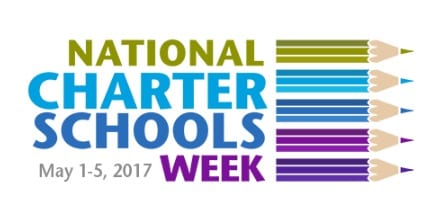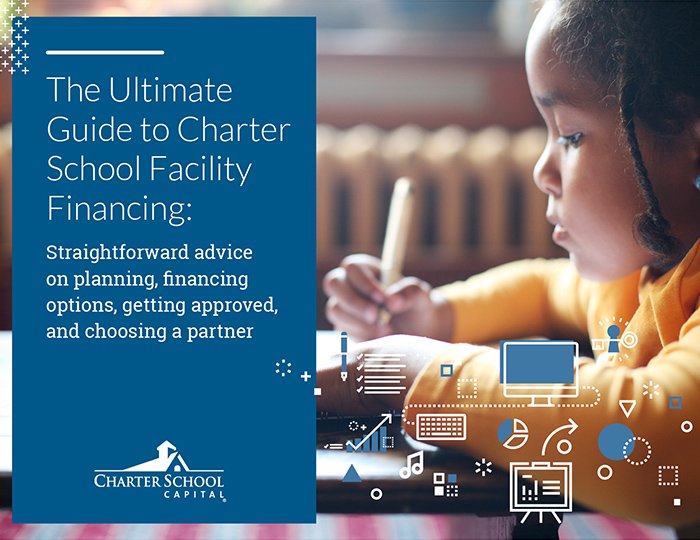 Many charter leaders around the country joined us on a recent webinar to hear from experts about how Federal and State policies will impact charter schools.
Many charter leaders around the country joined us on a recent webinar to hear from experts about how Federal and State policies will impact charter schools.
Panel speakers included our President and CEO Stuart Ellis, as well as two of the leading experts on charter school policy and law; Todd Ziebarth, Senior VP of State Advocacy and Support at the National Alliance for Public Charter Schools and John Cairns, Attorney and Consultant at John Cairns Law.
Looking at the current landscape for charter school policy and law around the country, the general feeling for charter school leaders is that they are in a “wait and see” mode. It is not yet known what the total impact on budget for education will be at the Federal level, or how the new administration’s support of charter schools will impact discussions at the state level around education reform. Ziebarth thinks we’ll know more about how these issues will be approached in the next legislative cycle. This will also impact funding available from government agencies (subsidies or direct grants) as well as the general market.
Meanwhile, momentum with charter school growth continues to gather speed with five states enacting charter school law in 2010. Maine and Washington passed their laws in 2011 and 2012 (respectively), and the unconstitutional ruling in 2015 by the Supreme Court was overturned in 2016. Also, Kentucky enacted their law this year, becoming the 44th state to have charter school law on the books. Charter opponents will continue to show up but this is a common strategy. When new charter laws goes into effect, opponents try to shut them down locally after failing at the legislative level. There is momentum toward passing charter law in five of the six states currently without charter law. Additionally, there has been progress made in states with existing laws, such as lifting caps on charter schools, strengthening school and authorizer accountability and improving facilities support.
In some cases, state legislatures continue to oppose charter school law, so there are some ongoing challenges. In Rhode Island, Illinois, Connecticut, and California there has been some success in pushing back against charter law, cutting funding or eliminating state authorizers.
At the Federal level there are a few key takeaways. Charter schools have a high public profile in the current administration and there are no major changes between the fiscal ’17 and fiscal ’18 budgets. Support for facilities grants remains the same, however specific grants for teacher trainings, after school and summer programs and aid in programs to first-generation and low income students have been cut. The Department of Education federal funding faces a 14% cut which could impact many key programs. Keep in mind, less than 10% of all K-12 funding comes from Federal funds currently.
On the facilities front, the federal government is showing support for facility development, but may pull back on that in the future. The staff person in Washington who oversees this thinks that there won’t be any significant decreases in funding, rather there will be some competition over where that money will get allocated. Rather than spreading the funding out nationwide, he thinks federal will favor funding specific large-scale projects in selected states.
Overall, the federal government is proposing increased charter school funding at roughly $168 million. These funds would help existing schools replicate and new charters start-up. It will also help facilities programs. Updates to federal facilities financing include the Per-Pupil Facilities Aid Program which provides competitive grants to help states administer “per pupil facilities aid” for charter schools. This appears to be the number one priority for most states as they head into legislative sessions to improve facility support for charters.
The progress being made at the state level will continue to build, given the hard work by charter advocates across the country. Charter school leaders will continue to make progress improving state policy environment for charters, such as more facilities support, clearer accountability requirements and enhanced flexibility. At the same time, opponents to charter school law are getting more sophisticated in their anti-charter strategies and tactics. An example of this is pushing legislation that would re-regulate charters through more “transparency.” It’s clear we will continue to see resistance to the charter school movement’s forward momentum.
At this point, the longstanding impact of the new administration is still unknown although typically charter schools have had a lot of support from recent administrations. While the amount of money historically spent by opponents of charter schools to campaign against them has been high, the population of charter schools has continued to grow in spite of it (from 3,000 charter schools 10 years ago to nearly 7,000 charters today). There are more than 3 million students currently attending charter schools today, who are choosing the best public education option to suit their families. The overwhelming desire and high number of students on charter wait lists – more than one million – highlights that families want the choice for the best public education available.
You can view the webinar recording on-demand and access presentation slides here.
Author: Grow Schools, formerly Charter School Capital
 Applications to the California School Facility Grant Program (SB740) are now being accepted starting May 18th. As part of our efforts to serve as a reliable resource for charter school leaders, we wanted to ensure charter schools in California are aware of this grant opportunity. Applications for 2017-18 are open now and close at 5:00 p.m. on June 1st, 2017.
Applications to the California School Facility Grant Program (SB740) are now being accepted starting May 18th. As part of our efforts to serve as a reliable resource for charter school leaders, we wanted to ensure charter schools in California are aware of this grant opportunity. Applications for 2017-18 are open now and close at 5:00 p.m. on June 1st, 2017.
The California School Facility Grant program (SB740) was created to provide annual assistance with facilities rent and lease expenditures to qualifying charter schools. Eligible charter schools typically receive $750 per unit of classroom-based average daily attendance, or up to 75% of their annual facilities rent and lease costs for the school. New funding rounds occur annually, and schools can turn in online applications to the California School Finance Authority (CSFA). The CSFA uses prior year data on pupil eligibility for Free or Reduced-Price Meals (FRPM) program to determine the charter school’s eligibility. At least 55% of the student enrollment must be in the FRPM program, or located in an elementary school attendance area where at least 55% of students enrolled are FRPM eligible in order to qualify.
For more information on the grant program, an FAQ with a full list of eligibility requirements is available here.
We’re heading back to Washington D.C. June 11-14 for the National Charter Schools Conference put on by the National Alliance for Public Charter Schools. This the annual conference where charter leaders and those supporting the charter movement come together to share ideas and learn. The Charter School Capital team is excited to continue its long-standing key level sponsorship support for the conference and the national charter school movement.
This year our team is presenting two informative breakout sessions to help charter leaders in both facilities options available and marketing efforts that benefit student enrollment marketing. Our first breakout on Monday, 6/12 is on funding options for facilities “I Need a Better Facility for My School. Now What?” with our President and CEO Stuart Ellis and Mike Morley, President and CEO at American Charter Development. Our second breakout session is on Tuesday, 6/13, “Digital Marketing 101 for Charter Schools – What You Need to Be Successful,” led by our VP of Marketing Kim Brater joined by Michael Barber, Founder and President of barber+hewitt and Scott Kauffman, Partner at Lucid Agency.
This year’s theme is “Educate. Innovate. Engage” to continue with the goals of greater growth for charter schools and offering innovative opportunities for sessions that strive to tackle many of the issues and challenges facing charter school leaders today. Last year’s conference in Nashville had more than 4,500 attendees, 130 breakout sessions and lots of opportunity for connecting with fellow charter leaders. The 2017 conference should be even bigger and better as charter leaders descend upon our nation’s capital.
Check back as our team will continue to share information about the conference on our blog and social media (if you haven’t followed us on Facebook, Twitter, LinkedIn or other channels check us out). We look forward to seeing you in June at the conference in Washington, DC!
 National Charter Schools Week 2017 (May 1-5) and we’re excited to do our part to support some of the exciting events and state Advocacy Days this year. We’re happy to take this opportunity to recognize and raise public awareness for charter schools, while celebrating their many academic successes.
National Charter Schools Week 2017 (May 1-5) and we’re excited to do our part to support some of the exciting events and state Advocacy Days this year. We’re happy to take this opportunity to recognize and raise public awareness for charter schools, while celebrating their many academic successes.
Charter school education has grown steadily since the first charter law passed in 1991 in Minnesota. Today there are nearly 7,000 public charter schools serving more than 3 million students nationwide in 44 states plus the District of Columbia – this is a sixfold increase from just 15 years ago and is the first year the 3 million mark has been surpassed.
There are many activities this week to celebrate and support charter schools. The National Alliance for Public Charter Schools offers a free downloadable toolkit with social channel logos to help promote awareness of the week, as well as other materials like a sample press release, sample op-ed piece, and a state proclamation worksheet to request that your state’s governor recognize Charter School Week.
In accordance with the increased efforts this year to raise charter school awareness amongst the nation’s lawmakers, the National Alliance is also recognizing what they call “Charter Champions” – these are the federal, state and local government officials who are pushing through policies aimed at helping the charter school movement continue to grow and thrive. They’ll be honored at a reception at the U.S. Capitol on Wednesday, May 3rd.
Special attention is also being given to charter school graduates, with the #30DaysofGrads campaign spotlighting some of the thousands of students graduating this year. Charter school students are invited to submit their photos and essays about their charter school experiences in order to be featured – the 30 days of Grads kicks off on the first day of National Charter School Week, May 1st.
Other events are happening at state capitols around the country for Advocacy Day on Tuesday, May 2nd. The California Charter Schools Association will be leading a group of charter school advocates in a day of meetings with local legislators at the state capitol in Sacramento. Michigan Association of Public Charter Schools will also be holding a “Day at the Capitol,” in Lansing, Michigan which will include charter school performances, meetings with State Legislators and social promotion of the event using the #CelebrateCharters hashtag.
Our team will be following along and featuring some of these National Charter Schools Week activities on our social channels including Facebook, Twitter, Instagram, and LinkedIn. We invite you to join the conversation as well, by using some of the free social logos and using the #NCSW2017 hashtag.
 JOIN OUR WEBINAR ON WEDNESDAY, MAY 3rd!
JOIN OUR WEBINAR ON WEDNESDAY, MAY 3rd!
What’s coming in Federal and State policy issues and what are the key changes from the new administration? Our upcoming webinar will address the trends and challenges that charter school leaders should know about.
Join us on Wednesday, May 3rd at 9 a.m. PST / 12 p.m. EST with panelists Todd Ziebarth, Senior VP of State Advocacy and Support, National Alliance for Public Charter Schools, John Cairns, Attorney and Consultant at John Cairns Law, and Stuart Ellis, Charter School Capital’s President and CEO. There will be a lively discussion about the types of federal funding currently available, congressional positions charter leaders can expect, and how individual states will be supporting charter schools.
REGISTER TODAY!
Charter Schools Face Facilities Challenges
Access to appropriate facilities and the funds to pay for them remain big obstacles for charter school expansion today. More than one million students are on charter school waiting lists across the country. One reason for this points to facilities needs. With only 12% of charters able to qualify for a bond, many are left facing financing challenges for facilities they require in order to match their educational programs and the needs of their students. Charter schools across the country are faced with smaller classrooms than their peers, and traditional funding programs simply aren’t sufficient to cover real estate investments or construction costs aimed toward facilities improvements.
According to the National Conference of State Legislation, a “significant relationship” exists between the condition of school facilities and student performance. And, data from the National Alliance for Public Charter Schools (NAPCS), highlights that more than half of charter schools could outgrow their current facilities within five years.
“The dramatic growth of charter schools across the country makes it clear that facilities financing, which is already one of the industry’s largest challenges, is an even more pressing issue today. Working with charter leaders, developers and other partners allow us to serve a broad array of charter schools nationwide by freeing-up resources that schools are then able to allocate to classroom instruction or other operational needs,” explains Stuart Ellis, President and CEO at Charter School Capital.
Back in 2014, Charter School Capital and its facilities arm, American Education Properties, launched with investors a $500 million pool of capital specifically for charter school facilities needs to allow for broader access to charter school facilities funding. To date, Charter School Capital has invested $300 million into charter school facilities with 37 properties under management nationwide. Access to these facilities funds allows charter schools to align their facilities with their educational mission.
Charter schools are able to determine their own long-term facilities needs and maintain full control of their buildings. This represents a major improvement from the year-to-year lease renewals that many charter schools currently experience. By providing long-term facilities security and an investment partner interested in charter school expansion, charter schools now have the ability to expand their enrollment and educational offerings with confidence.
“By providing charter schools security in their facilities, this effort helps lift a burden many schools face and will enable schools to focus, as they should, on their students and their academic results. School administrators will be better able to direct their scarce resources and time toward educating students rather than worrying about real estate needs,” said Nina Rees, president and CEO of the National Alliance for Public Charter Schools.
Charter School Capital offers a variety of financing solutions including working and growth capital in addition to facilities financing, so that charter schools can focus on reaching and teaching more students while continuing to succeed and grow.
If your charter school needs help with expansion, site design and selection or facility development, our team of experts is here to help you with a needs assessment. Contact us at GrowCharters@CharterSchoolCapital.org or learn more on our facilities offerings on our website. Also check out our recent webinars, including one focused on facilities options for charter schools.

The Ultimate Guide to Charter School Facility Financing:
Thinking about a new facility for your charter school or enhancing your current one? This guide shares straightforward and actionable advice on facilities planning, financing options, getting approved, choosing a partner, and much more! Download it here.
 JOIN OUR WEBINAR NEXT TUESDAY!
JOIN OUR WEBINAR NEXT TUESDAY!
I Need A Better Facility For My School. Now What?
Have you thought about the type of facility required to accommodate your current school’s needs and future growth? Are you aware of the various charter school facilities financing options that are available to you?
Join us for an exclusive webinar with Stuart Ellis, our President and CEO and Mike Morley, President and CEO of American Charter Development for a discussion about funding options for facilities.
PANELISTS:
Stuart Ellis, President and CEO, Charter School Capital
Mike Morley, President and CEO, American Charter Development
WHEN: Tuesday, 4/18 10AM Pacific / 1PM Eastern
Access to adequate facilities is one of the biggest challenges charter schools face nationwide, and we’ll address some best practices for successfully choosing and acquiring the best facility to suit your school’s growth needs.
REGISTER TODAY!
 This year’s California Charter Schools Conference was packed full of great keynotes, sessions and networking opportunities and we think it was one of the best conferences from CCSA! We enjoyed meeting other charter leaders in person at our booth and at our breakout and poster sessions on facilities funding, growth strategy, growth capital, student enrollment marketing, and social media marketing.
This year’s California Charter Schools Conference was packed full of great keynotes, sessions and networking opportunities and we think it was one of the best conferences from CCSA! We enjoyed meeting other charter leaders in person at our booth and at our breakout and poster sessions on facilities funding, growth strategy, growth capital, student enrollment marketing, and social media marketing.
The learnings we gained from attending sessions and connecting with partners and clients at the many events were invaluable. It was a privilege to be a Diamond Sponsor and we’d like to thank the California Charter Schools Association for putting on a great conference. If you couldn’t attend this year, definitely put it on your calendar for next year…in San Diego!
Whether you attended the conference or not, we invite you to access our conference session presentations and Facebook Live recordings by visiting our website. Also, sign-up for our newsletter and ongoing outreach to continue building your charter school knowledge. Please reach out if you have questions. And, keep an eye out for our upcoming webinars.
Hope to see you at next year’s conference!
 JOIN OUR WEBINAR THIS THURSDAY!
JOIN OUR WEBINAR THIS THURSDAY!
How can social media impact your school’s brand, enrollment efforts and communications to your community? Are you up-to-date on the latest social media platforms and best practices for reaching your target audiences? How’s your overall post engagement looking?
Join our VP of Marketing, Kim Brater and the Founder of barber&hewitt, Michael Barber, as they talk about how to amp up your school communications in our exclusive webinar. Learn tactics that will help your school select the right social media networks to reach parents, students and advocates.
Register today!
 NPR’s education news site, nprEd , recently posted an article giving a rundown on charter schools, namely what ARE they and how are they different from other private and public schools?
NPR’s education news site, nprEd , recently posted an article giving a rundown on charter schools, namely what ARE they and how are they different from other private and public schools?
Despite ever-growing numbers of charter schools in the country (3.1 million students currently enrolled in charter schools across 43 states), most Americans have no idea how charter schools work. The 2014 PDK/Gallup poll on public attitudes toward education found that while 63% of those asked favored charter schools (without a definition of what a charter is), 48% of those surveyed didn’t know they were public, and 57% thought they charged tuition.
The article covers how charter schools work, how they’re funded, who runs them, and whether they’re better than their public school competition. Read the full story.